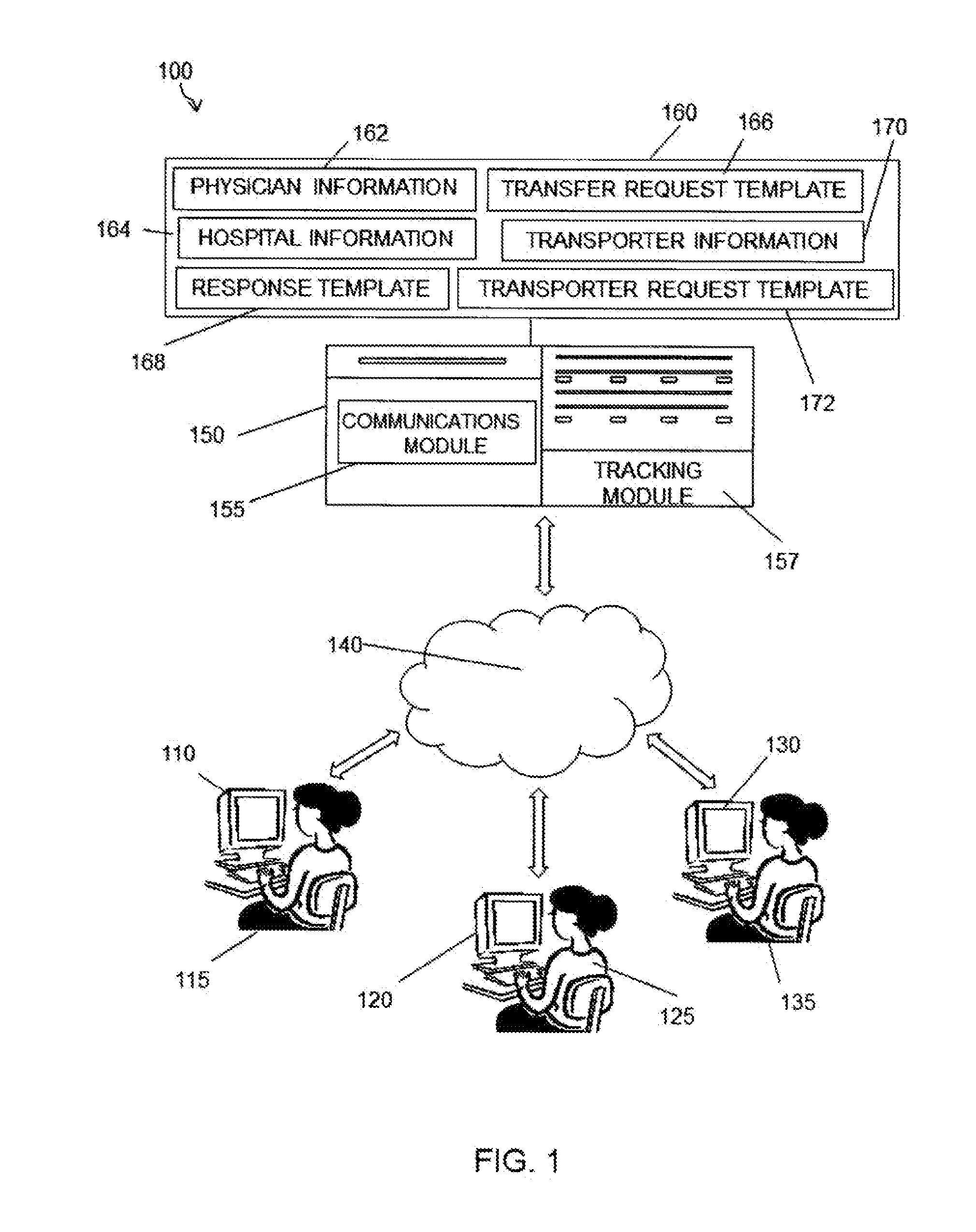System and Method for Transferring Patients Between Hospitals
a patient and hospital technology, applied in the field of system and method for transferring patients to or between hospitals, can solve the problems of wasting precious hours before any decision, affecting the efficiency of patient care, and affecting the quality of care of patients,
- Summary
- Abstract
- Description
- Claims
- Application Information
AI Technical Summary
Benefits of technology
Problems solved by technology
Method used
Image
Examples
Embodiment Construction
[0021]Referring to the drawings in detail, and specifically to FIG. 1, reference numeral 100 generally designates an online patient transfer system in accordance with one embodiment of the present invention. In general, the online patient transfer system 100 is comprised of database 160 housing a transfer request template 166 coupled to server 150. A transfer request template 166 and response template 168 are stored on database 160 and are accessible through one or more computers 110, 120, and 130 connected to server 150 via internet 140. Server 150 is equipped with communications module 155 for enabling communication between database 160 and each of computers 110, 120, and 130. However, while shown and described as computers, devices 110, 120, and 130 can be any web-based device such as but not limited to smart-phones, tablets, touch-screen devices and the like. In a preferred embodiment, database 160 can further include hospital information 164 and physician information 162. In a ...
PUM
 Login to View More
Login to View More Abstract
Description
Claims
Application Information
 Login to View More
Login to View More - R&D
- Intellectual Property
- Life Sciences
- Materials
- Tech Scout
- Unparalleled Data Quality
- Higher Quality Content
- 60% Fewer Hallucinations
Browse by: Latest US Patents, China's latest patents, Technical Efficacy Thesaurus, Application Domain, Technology Topic, Popular Technical Reports.
© 2025 PatSnap. All rights reserved.Legal|Privacy policy|Modern Slavery Act Transparency Statement|Sitemap|About US| Contact US: help@patsnap.com



